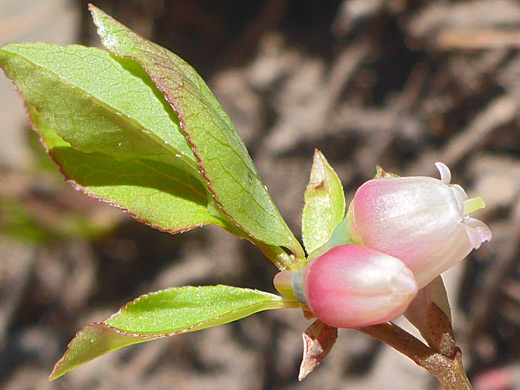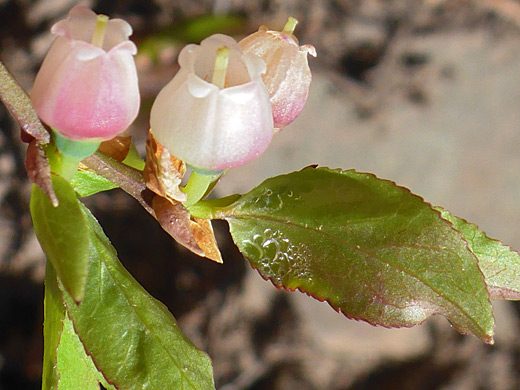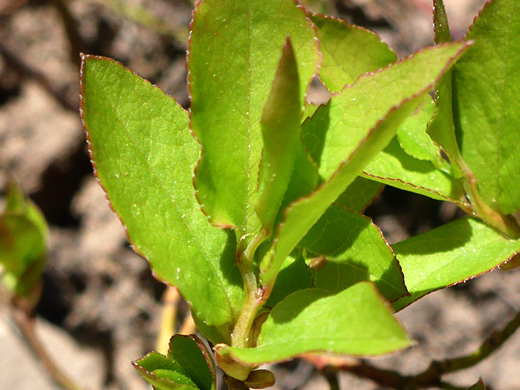Common names:
Dwarf huckleberry, dwarf bilberry
Family:
Scientific name:
Vaccinium cespitosum
Main flower color:
Range:
The Rocky Mountain states and all states to the west; least common in Nevada
Height:
Up to 20 inches
Habitat:
Hillsides, meadows; generally open, dry places, from near sea level to 14,500 feet
Leaves:
Oblanceolate to oblong, finely toothed, up to 1.3 inches long
Season:
May to July
Vaccinium cespitosum is a low-growing species, forming dense clumps, and inhabiting a wide range of habitats and elevations, from sea level to 14,500 feet. Branches are yellowish-green or reddish-green, round or weakly angled in cross-section, slightly glandular-hairy when young. Leaves are bright green, often red along the margins, which are lined with tiny teeth, especially the upper half. Upper leaf surfaces are hairless, the undersides have a sparse covering of short glandular hairs. Leaf bases are tapered.
Flowers are formed of a light green calyx, the lobes of which wither early, and a white to pink, urn-shaped corolla with five tiny lobes at the tip. Stamens are included, the pistil slightly exserted. Flowers are solitary, from the youngest leaf axils. Fruits are blue or black berries, about a third of an inch (or less) in diameter.
Flowers are formed of a light green calyx, the lobes of which wither early, and a white to pink, urn-shaped corolla with five tiny lobes at the tip. Stamens are included, the pistil slightly exserted. Flowers are solitary, from the youngest leaf axils. Fruits are blue or black berries, about a third of an inch (or less) in diameter.
All Contents © Copyright The American Southwest | Comments and Questions | Contribute | Site Map




